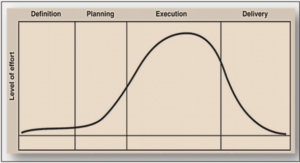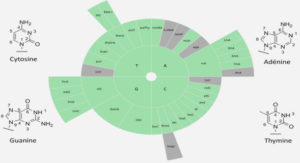Suspension phased injection in pulsed arc jet
Time-resolved imaging system To observe the periodic plasma oscillations obtained in « mosquito » mode the time-resolved and synchronous imaging system has been implemented. The study of the oscillating plasma with the periods of around 700 µs is possible by the choice of the fast shutter camera.The time-resolved imaging system is presented in Figure 3.2. It consists of a fast shutter camera, high-power laser diode and an interferential lter (801 nm). The laser and the lter have been combined with the fast shutter camera to permit the observation of the suspension treatment within the plasma jet. The principle is to observe the suspension penetration within the plasma jet by illuminating droplets using the laser shots. The interferential lter (801 nm) centered on the laser wavelength permits to eliminate on the image the light coming from the pure nitrogen plasma.
Camera
Fast shutter camera Pixely (PCO, Germany) can be applied in many scientic areas, e.g. luminescence spectroscopy, particle image velocimetry (PIV), high resolution microscopy. The camera is equipped with the CCD matrix with the high resolution of 1392 x 1040 pixels, what enables to observe the details of the suspension droplet. Pixely camera can work in three operation modes: async (asynchronous) mode, double/shutter mode, video mode. In order to synchronize the camera with the laser the async mode has been used, which enables to control the CCD matrix exposure time in the range from 5 µs to 65 ms. The functioning of CCD can be divided into two phases: exposure and readout. During the rst phase (CCD-Exposure in Figure 3.3) the CCD collects passively incoming photons and stores electrons in its cells. After the exposure time, the cells are read out one line at a time (CCD-Readout in Figure 3.3) and are shifted down the entire area of the CCD matrix.Camera Pixely is connected via USB 2.0 connector to computer and controlled by program Camware. This software allows to trigger the camera by the internal or external signal. In the case of the time-resolved imaging the second option has been chosen. Camware enables also to record images, save one image which is displayed in the active window or save the sequence of 75 images which is useful in the observation of the plasma jet. To study the plasma with higher resolution, e.g. to record the treatment of suspension droplets inside the plasma jet, the Innimax long-distance microscope system (Innity, Boulder, USA) has been used. It consists of the objective and large format amplier which can be additionally mounted. The use of the objective results in the increase of magnication up to 2.9x. The optional amplier extends the magnication, what is highlighted in Figure 3.4.Figure 3.4 a) has been taken by the camera Pixely with the mounted Innimax and the amplier. It is possible to observe a magnied object at the distance of 3 mm from the torch nozzle. In Figure 3.4 b) the result of using the camera with Innimax objective is shown where the magnication decreases. The distance from the torch equals 22 mm. The last gure, 3.4 c), presents the picture taken by the camera Pixely. The magnication decreases 2.9 times compared to the gure b). Figure 3.4 c) presents also the use of the laser synchronized with the camera.
Laser
High power laser diode (HiWatch, Oseir, Finland) is designed for demanding illumination applications. The parameters of this laser unit are presented in Table 3.1. Table 3.1: Parameters of a laser diode. Parameter Value Emission wavelength 801 ± 2 nm Output geometry 8 x 1 mm Emission power 50 W Single pulse length 0.025-1 µs Max. pulse frequency 20 MHz Time delay 36 ns The emission wavelength of the laser is in the range of 801 ± 2 nm which corresponds to the infra-red (IR) spectral region. The response time of the laser diode is negligible and equals 36 ns. The HiWatch laser is controlled by a driver module, presented in Figure 3.5. The diode is energized when the MOSFET transistor is turned on by the signal sent to the gate input. The current ows from the energy storage capacitor, through the laser diode, current limiting resistor, MOSFET and the current sense resistor, back to the energy storage capacitor. The output pulse width and frequency follow the signal which is directed to input gate. The driver provides variable output current from 5A to 50A with pulse widths up to 1 µs and frequencies up to 1MHz.The width of the pulse emitted by the laser depends mainly on the width of signal put to the input gate. It is possible to obtain 50 ns laser pulse by providing 50 ns input to the driver module. The width of pulse transmitted to the input gate should be smaller than 1 µs due to recharging of the energy storage capacitor (Figure 3.5). It is also possible to input any binary waveform which will be replicated in the emission. In this case, it is important to take into consideration the dependence presented in Figure 3.6.





